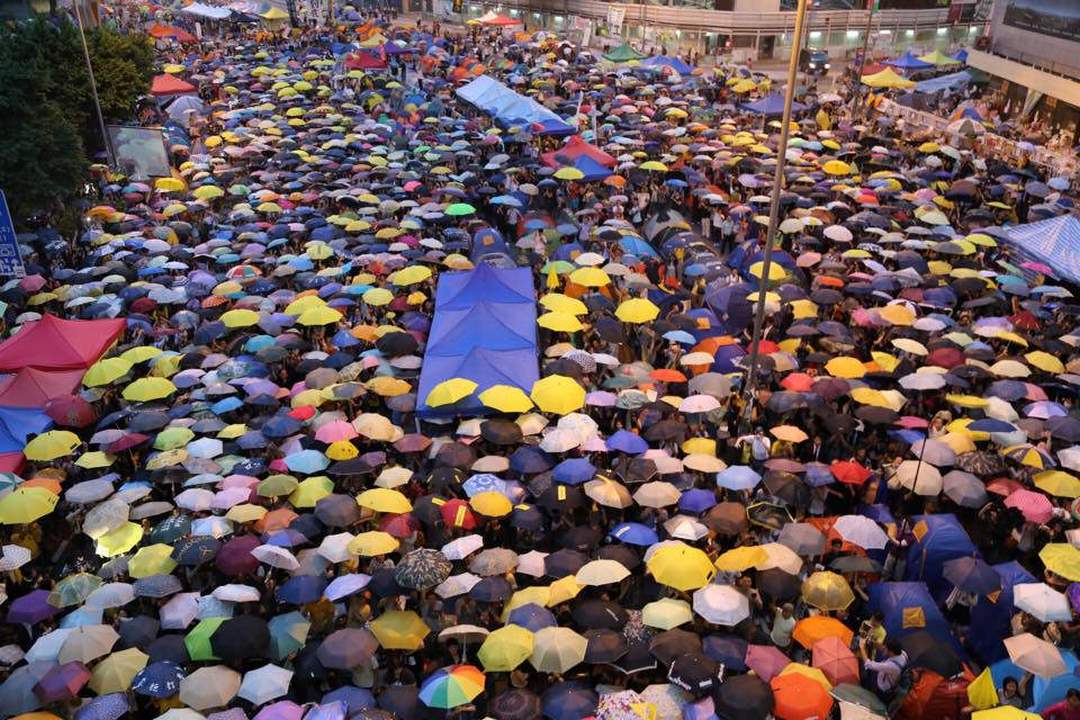Bauhinia blakeana—that’s the name of the orchid tree whose five-petal flower adorns the city’s flag and serves as the official emblem of post-colonial Hong Kong.
If the floral symbol ever had any real meaning for the people who live here, however, it has been largely lost in the 20 years since the “handover of sovereignty” (now a verboten phrase, according to apparatchiks in the city’s Protocol Division) from the United Kingdom to China.
Just in case you’re interested, the totem tree—named after Sir Henry Blake, Governor of Hong Kong from 1898 to 1903—was actually chosen from 13 locally grown species way back in the dark old colonial days of 1965, reportedly because its hybrid nature best reflected the mixed heritage of the colony itself.
It was adopted in 1990 as the centrepiece for the city’s post-colonial flag, which was raised for the first time at the midnight handover (Oops!—there’s that word again.) on July 1, 1997.
But that’s all mostly forgotten history now, and many other symbols have risen in its place to define the troubled two decades that have transpired since Hong Kong’s “return to China/the Motherland”, the locution currently favoured by the Protocol Division.

First, there was the blight of disease. As if timed to test Hong Kong’s first post-colonial leader, Tung Chee-hwa, the city was struck by a nasty outbreak of bird flu—transmitted from chickens and known as A(H5N1) influenza—that infected 18 people, six of whom died. Tung acted decisively in his first year of office, ordering the slaughter of every chicken in the city—some 1.2 million in total—to wipe out the disease.
Then, in 2003, with Tung still at the helm, there was SARS—a deadly coronavirus that shut down schools and spread death and fear, transforming Hong Kong, seen as the epicentre of the disease, from “Asia’s world city” into a global pariah for an excruciating period of four months.
In the end, before the World Heath Organisation issued the “all clear” signal for the city in June of 2003, 1,755 Hongkongers had been infected and 299 died. Worldwide, the disease infected 8,096 people and killed 744.
A resilient Hong Kong would bounce back from these days of disease and death to thrive and prosper again.

Tung, however, would not prove so lucky. Just eight days after the WHO gave the city a clean bill of health, a half million people poured into the streets to protest against his administration’s proposed anti-subversion legislation. The huge turnout, staged on the same day as the sixth anniversary of the handover, demonstrated the massive distrust among Hongkongers for the Chinese leadership in Beijing as well as for their hand-selected first chief executive in Hong Kong.
It also marked the beginning of the end for Tung. As his popularity plummeted, the former shipping magnate would hang on to office for nearly two more years before finally resigning in March of 2005, citing “health problems” that everyone recognised as a cover for Beijing’s loss of faith in his leadership.
But Tung was only our first avatar of failed executive leadership. Two other hamstrung CEs, Donald Tsang Yam-kuen and Leung Chun-ying, would follow, with the widely reviled Leung lurching his way through the 2014 pro-democracy Occupy movement that paralysed key parts of the city for 79 days and divided Hongkongers into the yellow-and-blue ribbon camps that continue to roil our politics today.

And now Hong Kong’s fourth post-handover leader, Carrie Lam Cheng Yuet-ngor, finds herself caught in the same “one-country-two-systems” crosswinds that so vexed her predecessors. She wants to heal the great divide, but she can’t; it runs too wide and cuts too deep.
Although Hong Kong will on this July 1 mark its 21st year as a Special Administrative Region of China, its stubborn culture of anti-Beijing protests has become an integral part of the city’s post-handover identity, recently escalating in calls for self-determination and independence that President Xi Jinping, the most powerful Chinese leader since Mao Zedong, has warned “cross a red line.”
Fresh calls for resurrecting the sort of national security legislation that prompted 500,000 demonstrators to hit the streets in 2003 are emanating from Beijing on top of other unsettling developments.
Thanks to one of several heavy-handed “interpretations” of the Basic Law by the National People’s Congress Standing Committee, we have seen duly elected lawmakers whom the Chinese leadership perceives as troublemakers ousted from the Legislative Council and other potential provocateurs banned from even running for office.

Despite the strenuous objections of the Hong Kong Bar Association and a host of pan-democratic politicians, mainland laws—and perhaps mainland-style interrogations and detentions— will soon apply in the West Kowloon terminus of the recently completed high-speed rail link to Guangzhou, yet another potent symbol of the times.
It is in this context that the Education Bureau, with the blessing of the chief executive, is moving to censor Hong Kong history textbooks to make them “more accurate”—read: more appealing to the powers that be in the north. The lackeys in the Protocol Division are simply following the bureau’s lead.
In another area of pressing concern, the trend of Hong Kong property developers offering up so-called nano or micro flats little bigger than a parking space for as much as HK$7.8 million has been decried as inhumane amid calls for the government to regulate a minimum flat size and implement some form of rent control or subsidy scheme. Predictably, officials have ignored those calls in the name of a “free market” that is in reality a land monopoly held by the Hong Kong government for the pleasure and profit of property tycoons.
Neither is the Lam administration doing anything to combat our micro politics—the ever-shrinking space for freedom of choice and expression whose price and square footage cannot be measured.
